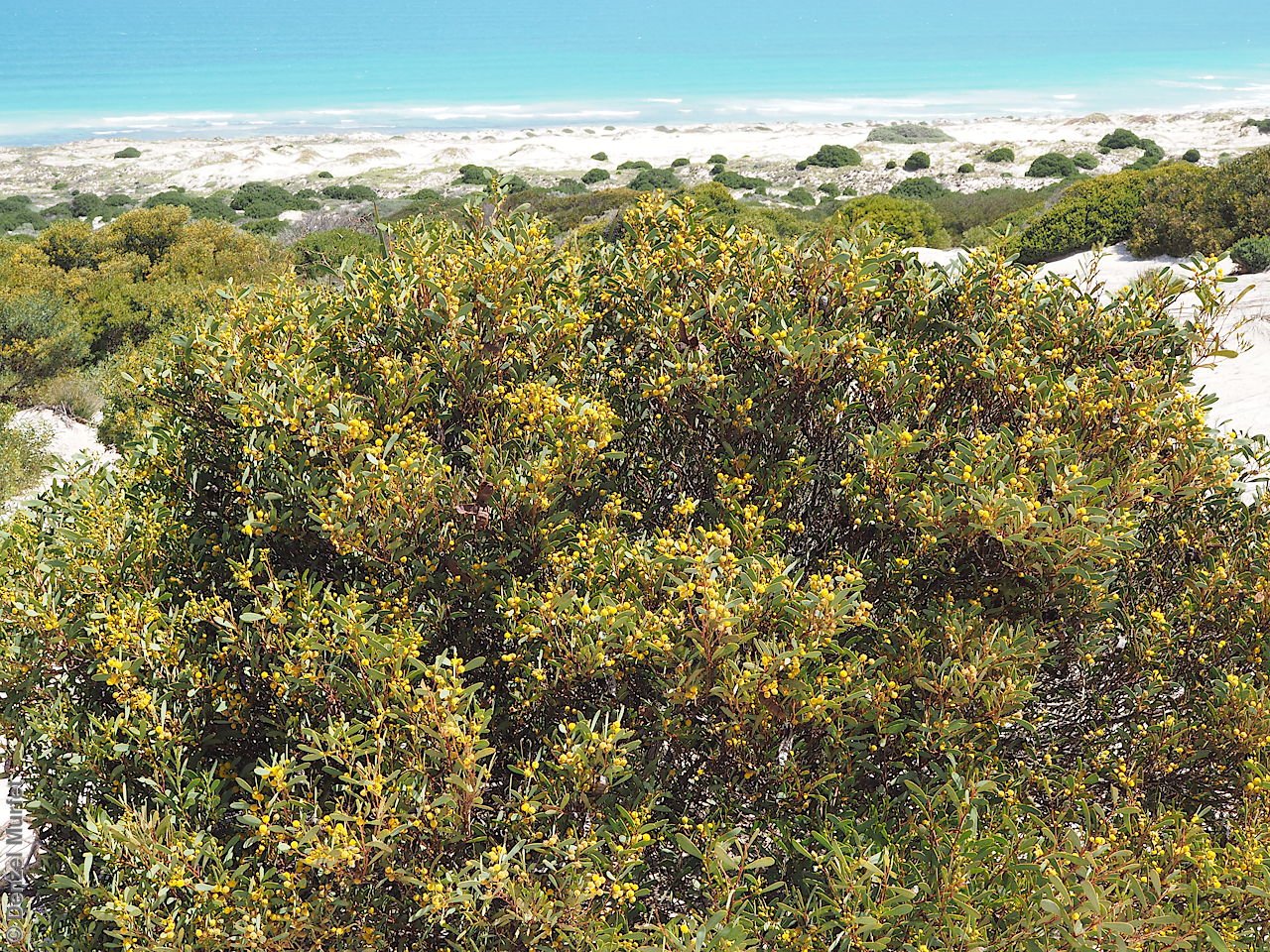
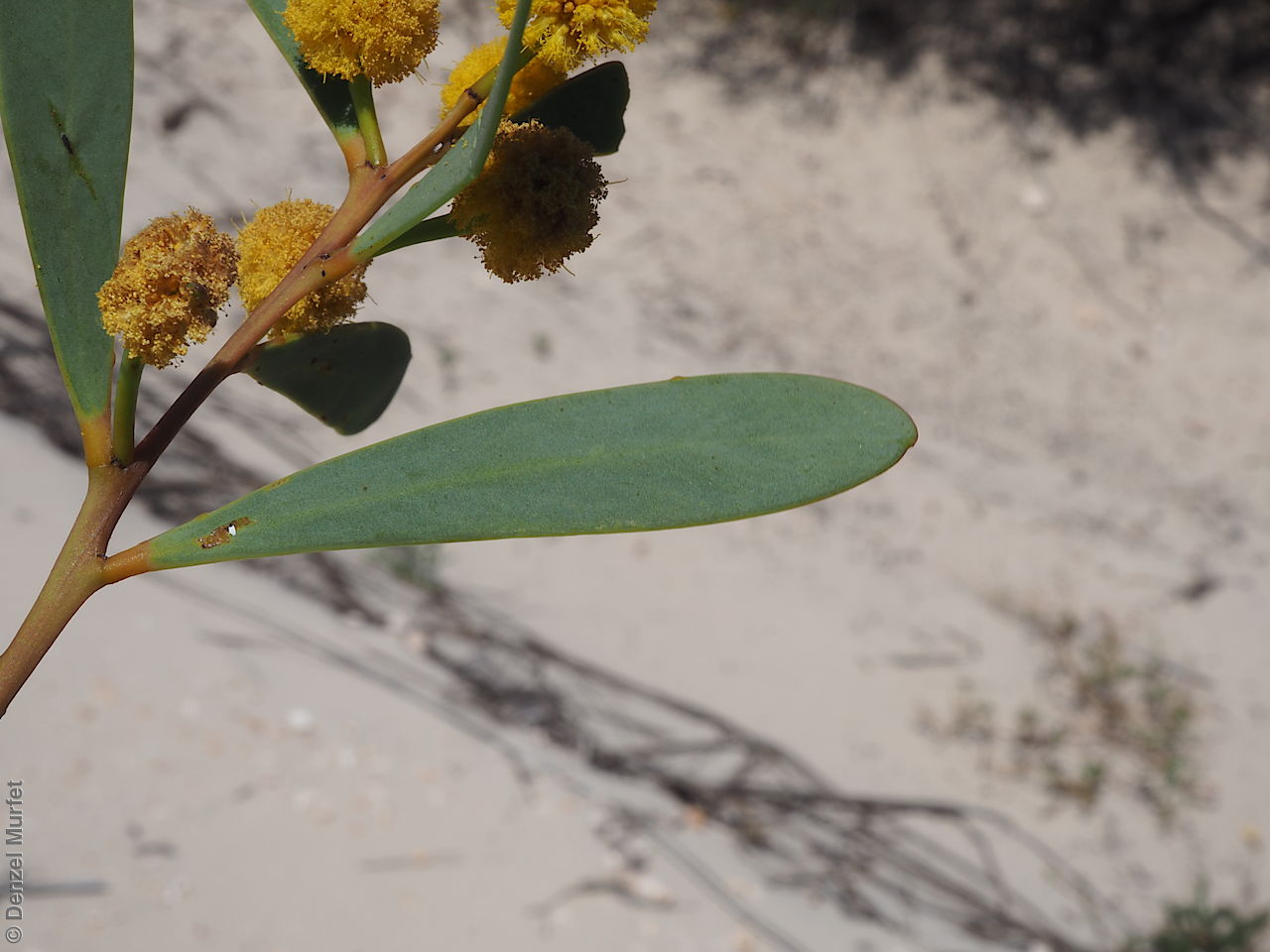
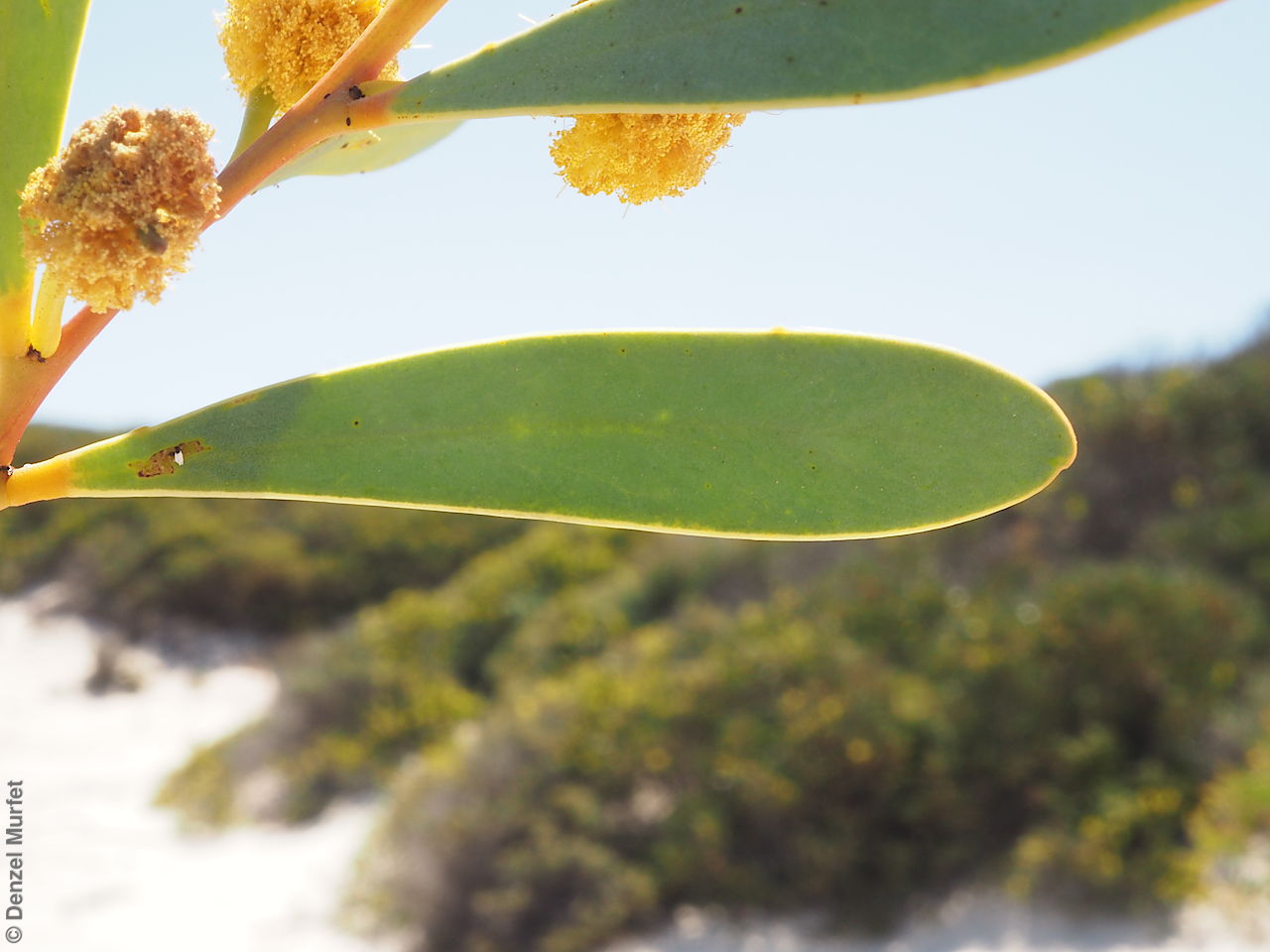
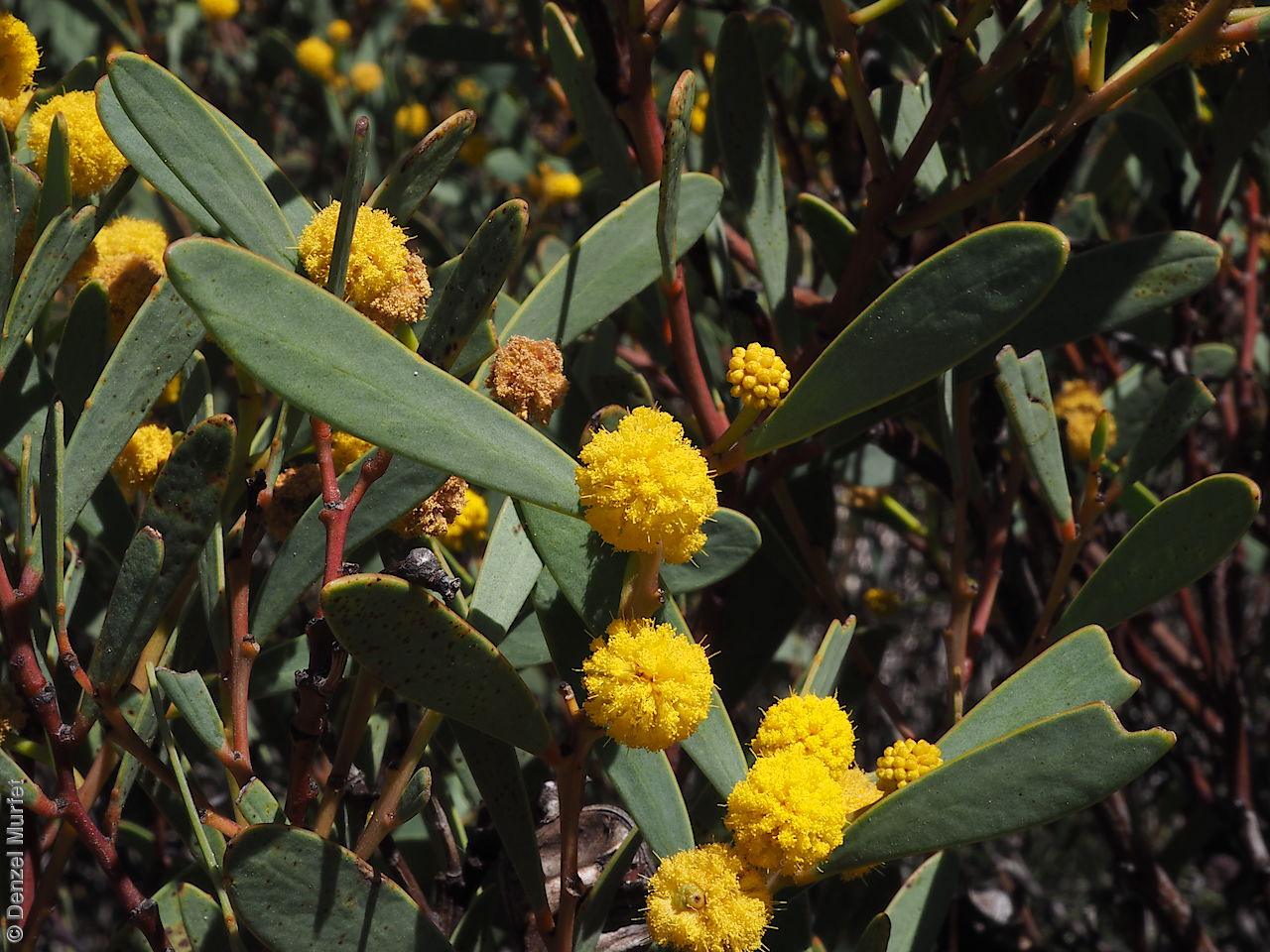
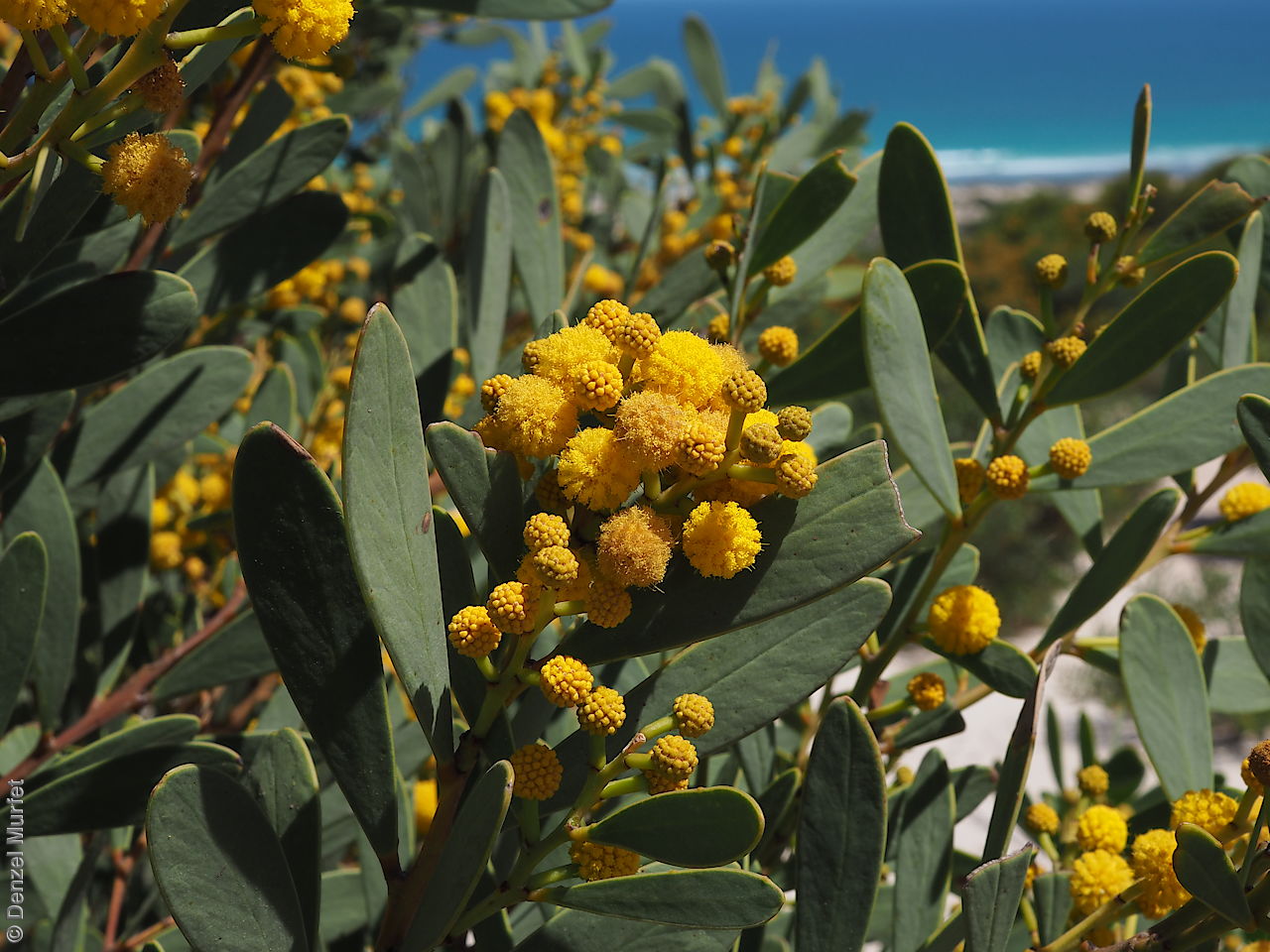
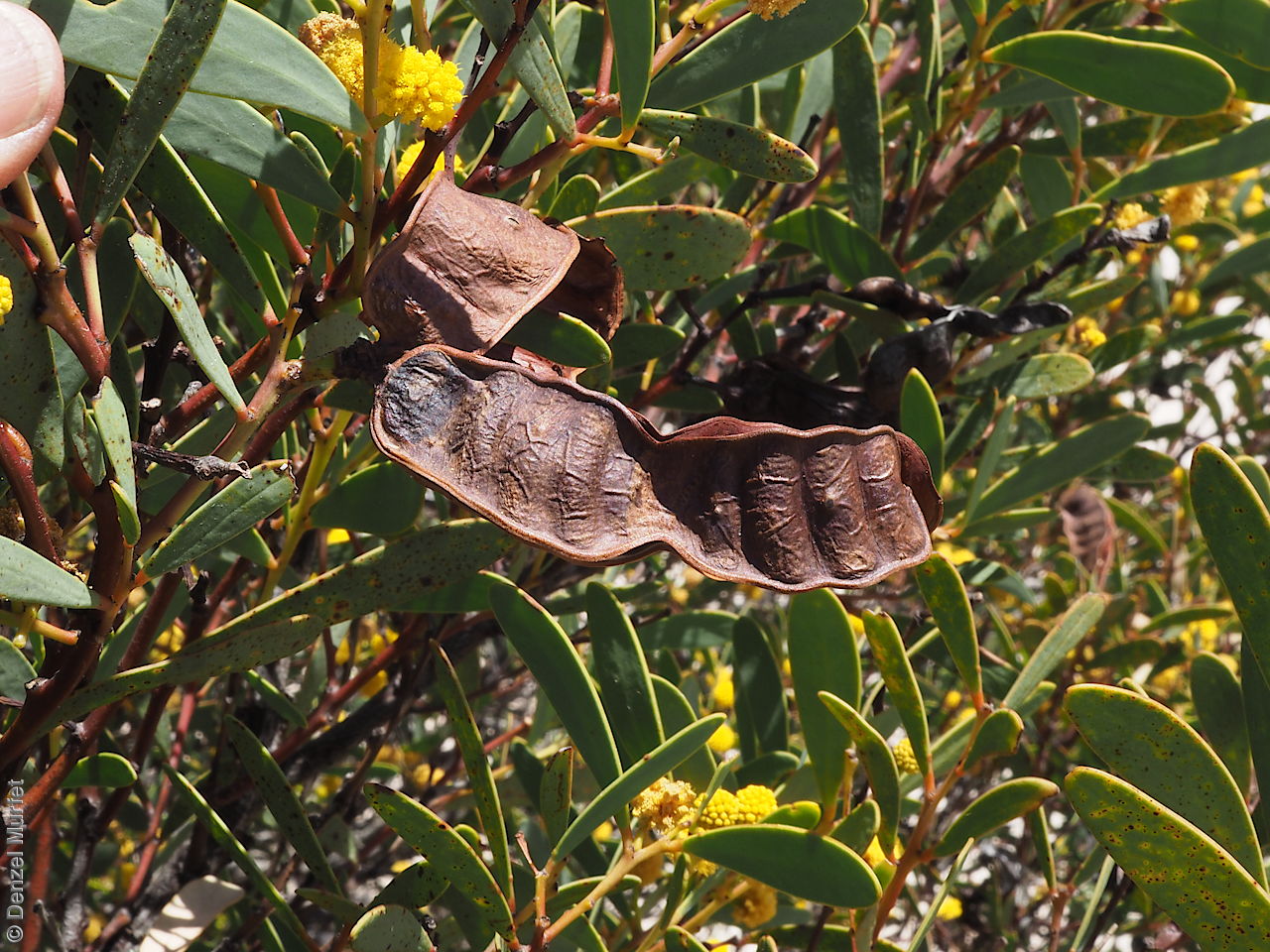
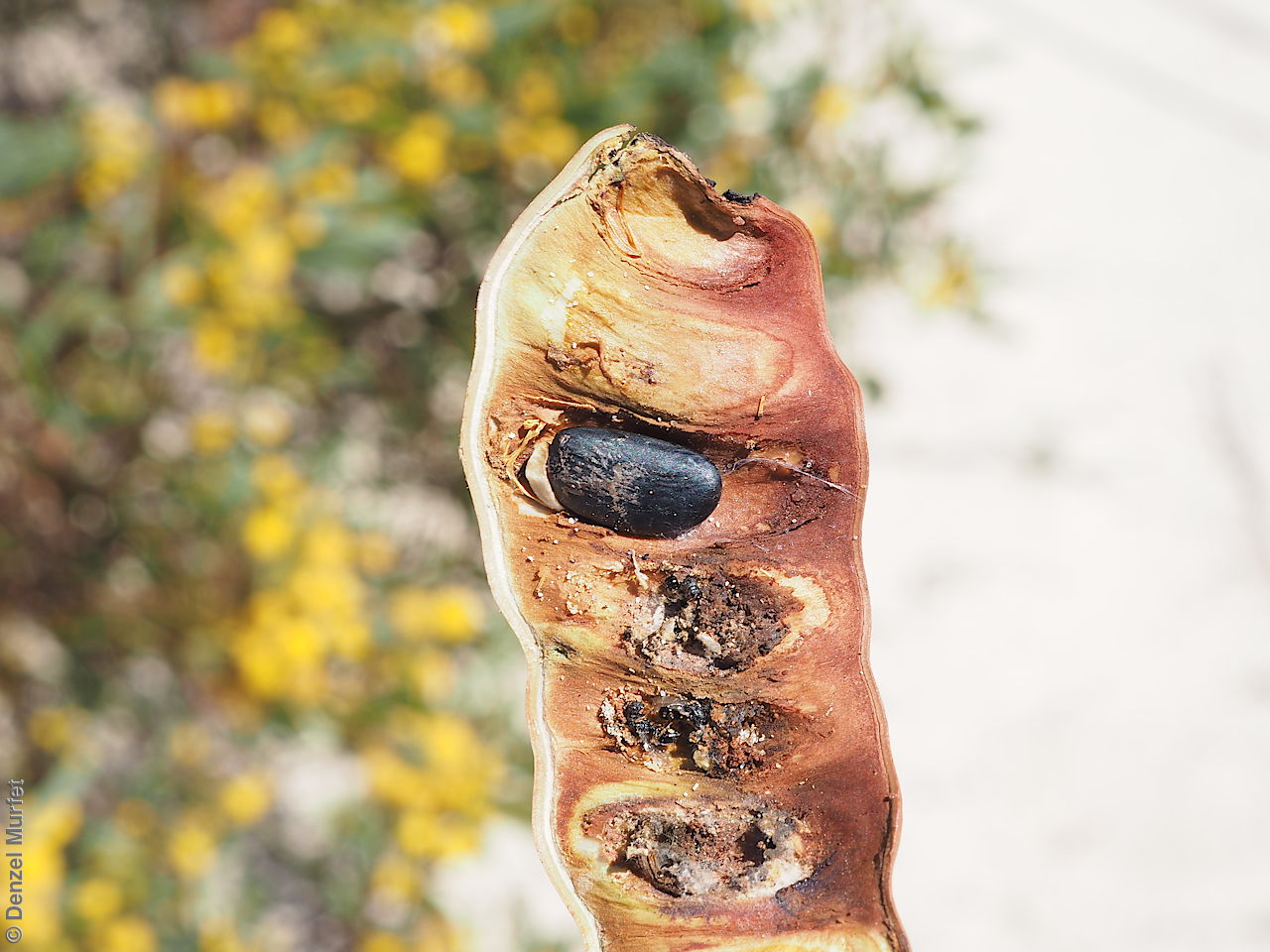
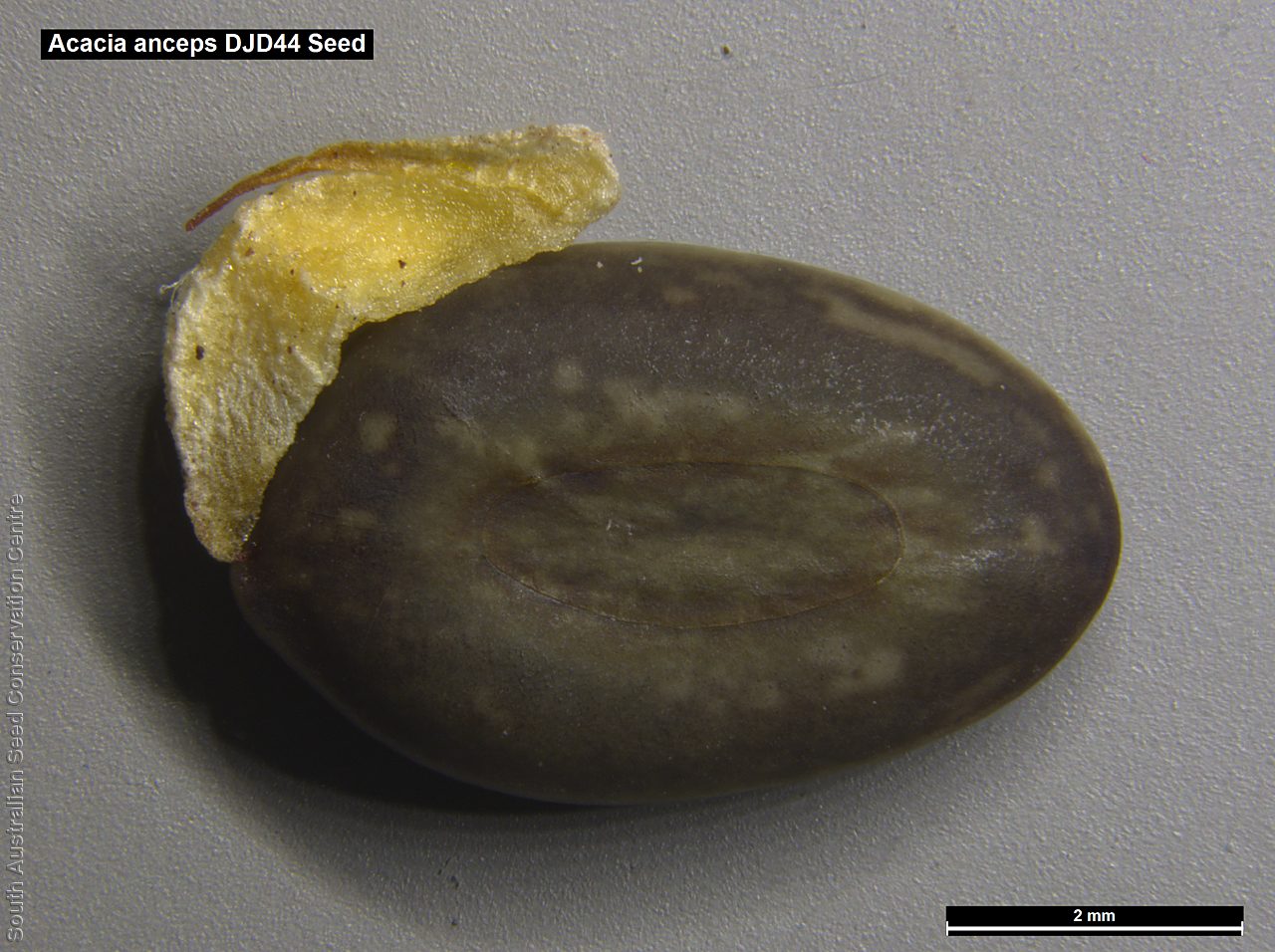


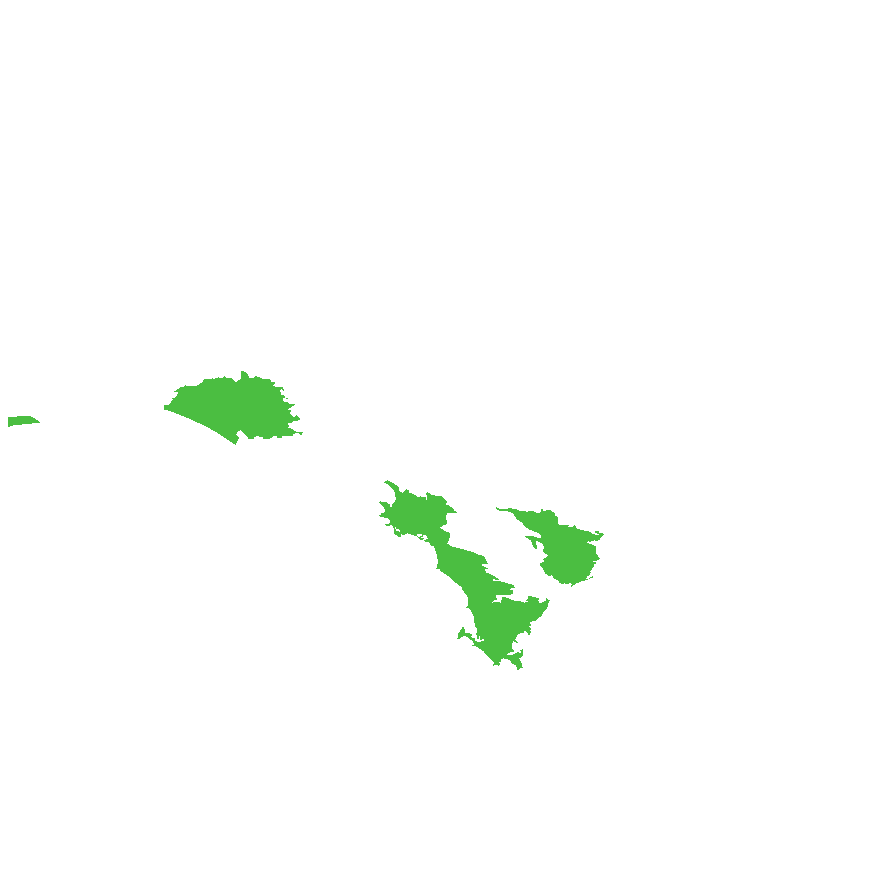
Botanical art
Prior names
Acacia glaucescens
Acacia pterigoidea
Acacia muelleri
Acacia anceps var. angustifolia
Etymology
Acacia from the Greek 'akakia' and derived from 'ake' or 'akis' meaning a sharp point or thorn and 'akazo' meaning to sharpen. Dioscorides, the Greek physician and botanist used the word in the 1st century AD for the Egyptian thorn tree, Acacia arabica. Anceps from the Latin 'anceps' meaning two edged, referring to the flattened angled stems of the species.
Distribution and status
Found scattered along coastal areas of South Australia from the Great Australian Bight to the eastern Eyre Peninsula. Grows in calcareous sand and shallow red-brown sand, in coastal dune vegetation or open scrub. Also found in Western Australia. Native. Common in South Australia. Uncommon in Western Australia.
Herbarium regions: Nullarbor, Eyre Peninsula
NRM regions: Alinytjara Wilurara, Eyre Peninsula
AVH map: SA distribution map (external link)
Plant description
Bushy spreading shrubs to 3 m high and wide, glabrous. Stems compressed and very acutely angled. Phyllodes oblanceolate, to 65 mm long and 30 mm wide, leathery, glabrous with a distinct pulvinus (joint at base of leaf stalk). This species is distinguished readily from Acacia sp. Winged (C.R.Alcock 4936) which have elliptic, less elongate phyllodes (to 55 mm long), very reduced pulvinus which continuous with the branchlets (that are sometimes narrowly winged) along their adaxial edge, and denser flower-heads. Inflorescences axillary, solitary with large globular, deep golden-yellow flower-head. Flowering between September and February. Fruits are red to brown, flat often undulating pod to 5 cm long and 12mm wide, straight or curved with wrinkled or prominent transverse lines and thick vein-like margins. Seeds are dark brown, black or mottled, elliptic to 8 mm long and 3 mm wide. Seed embryo type is investing.
Seed collection and propagation
Collect seeds between November and January. Collect mature pods that are turning brown with hard, dark seeds inside. Place the pods in a tray and leave to dry for 1-2 weeks or until the pods begin to split. Then rub the dried pods to dislodge the seeds. Use a sieve to separate any unwanted material. Store the seeds with a desiccant such as dried silica beads or dry rice, in an airtight container in a cool and dry place. This species has physical dormancy that needs to be overcome for the seed to germinate (e.g. nicking or softening the seed coat).
| Location | No. of seeds (weight grams) | Number of plants | Date collected | Collection number Collection location | Date stored | % Viability | Storage temperature |
|---|---|---|---|---|---|---|---|
| BGA MSB | 13,600 (338 g) 13,600 (338 g) | 90 | 25-Nov-2004 | DJD44 Eyre Peninsula | 31-Mar-2006 | -18°C |
Number of plants: This is the number of plants from which the seeds were collected.
Collection location: The Herbarium of South Australia's region name.
% Viability: Percentage of filled healthy seeds determined by a cut test or x-ray.